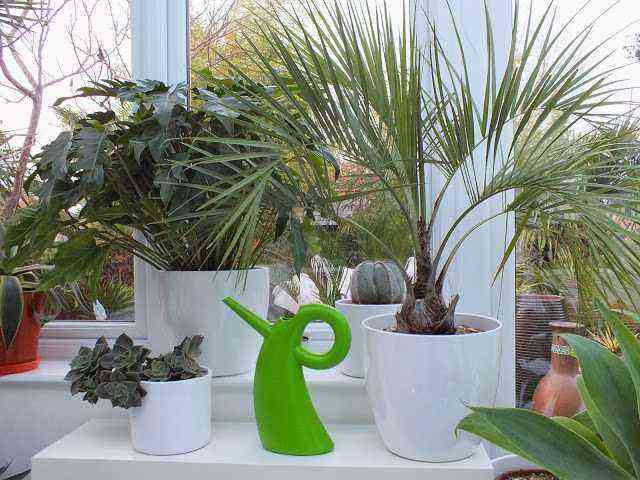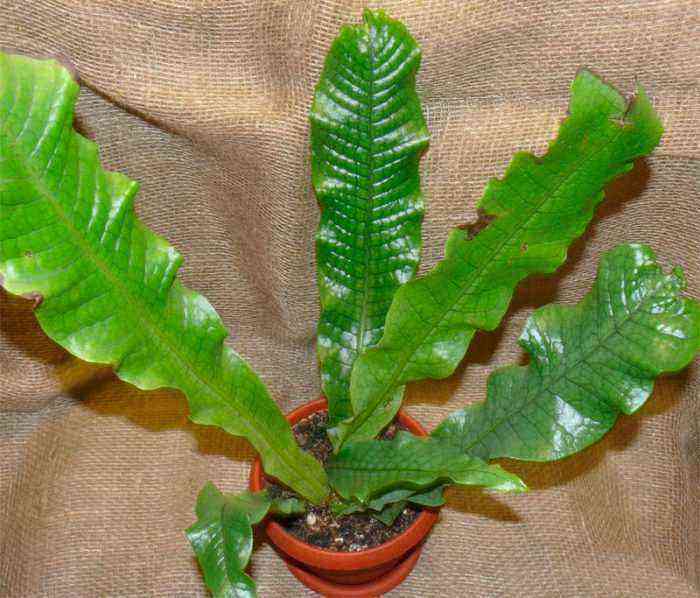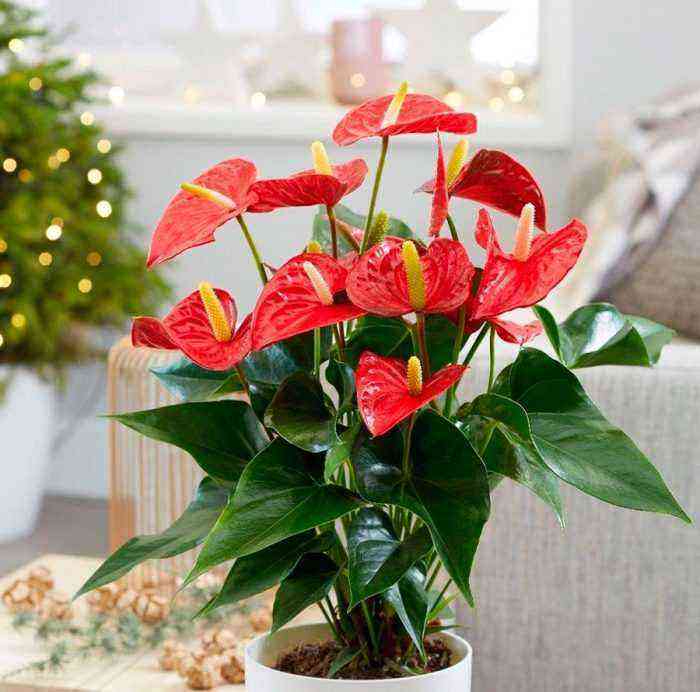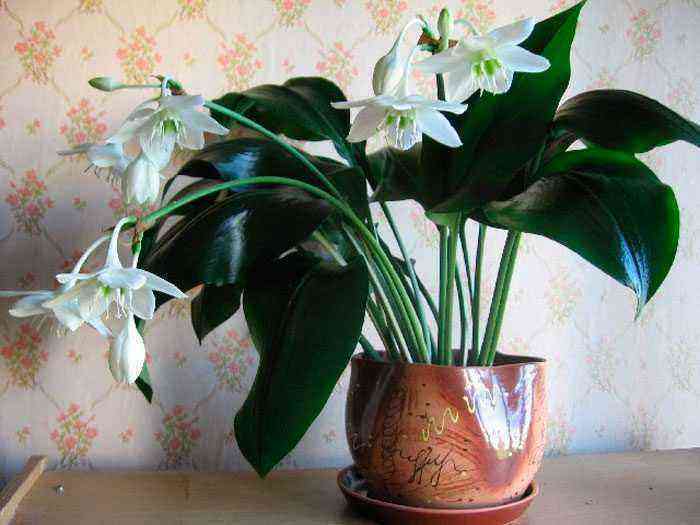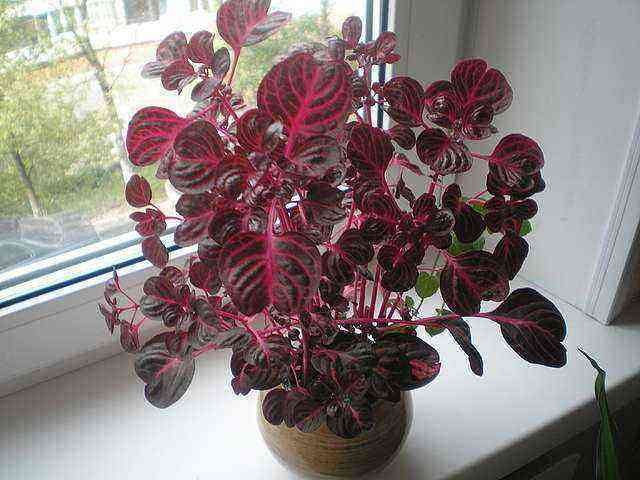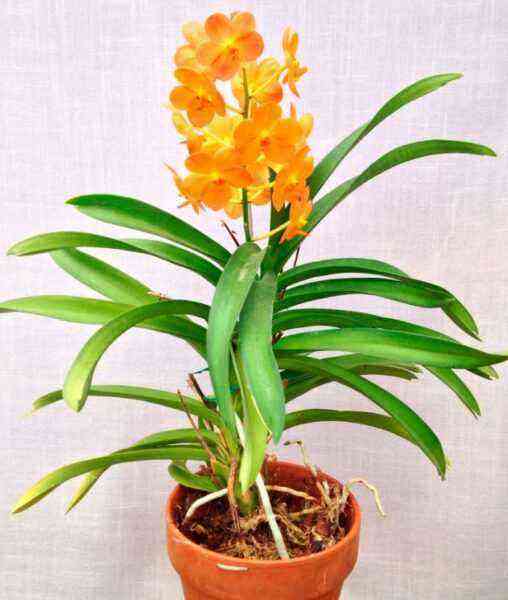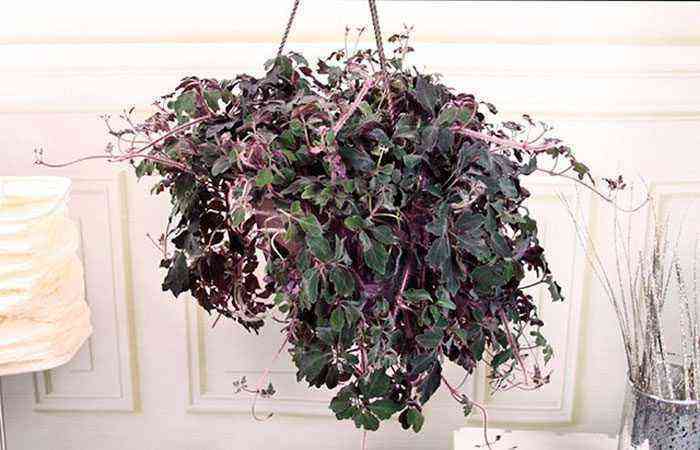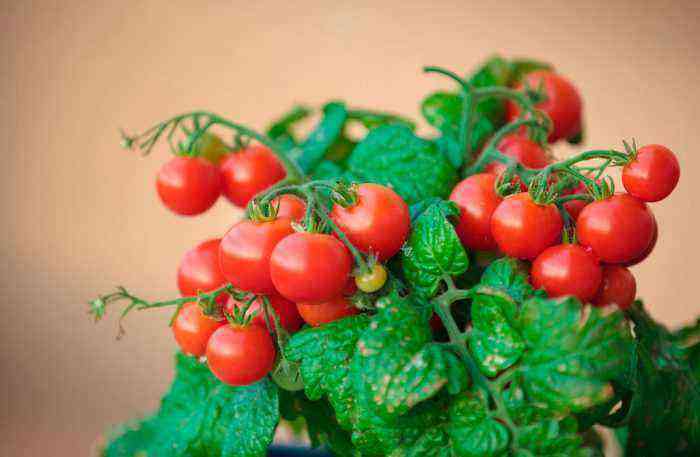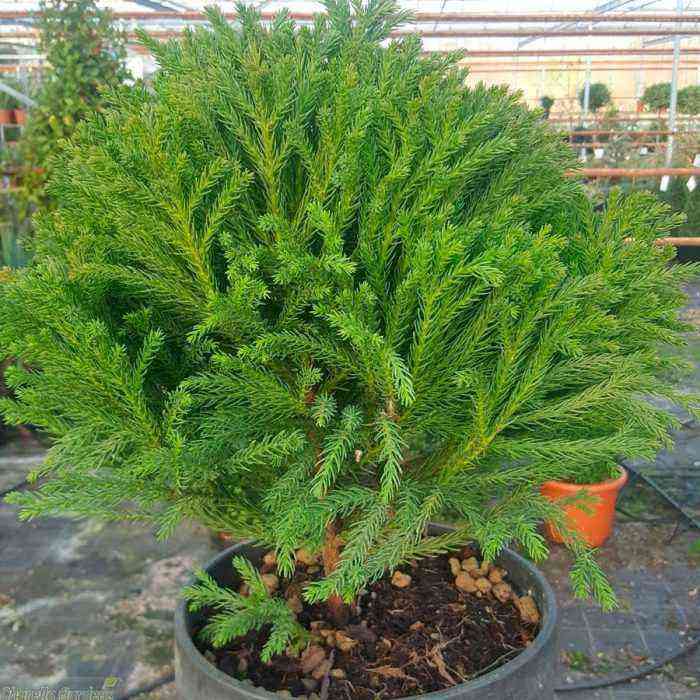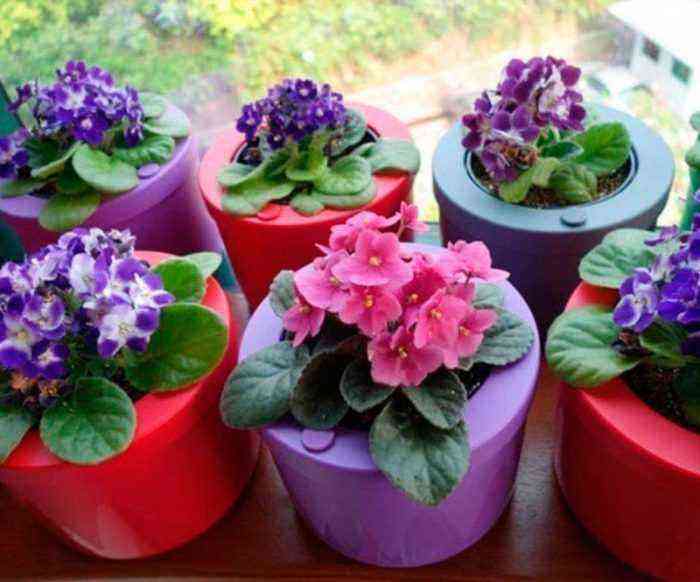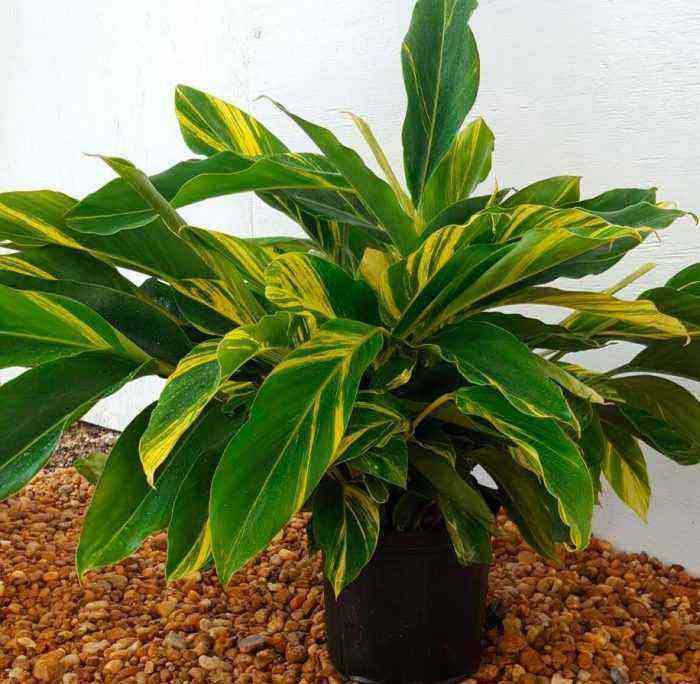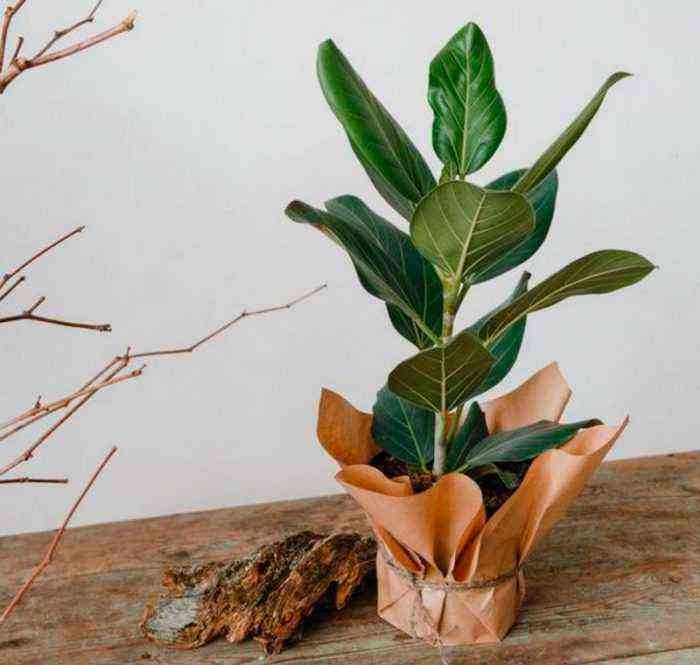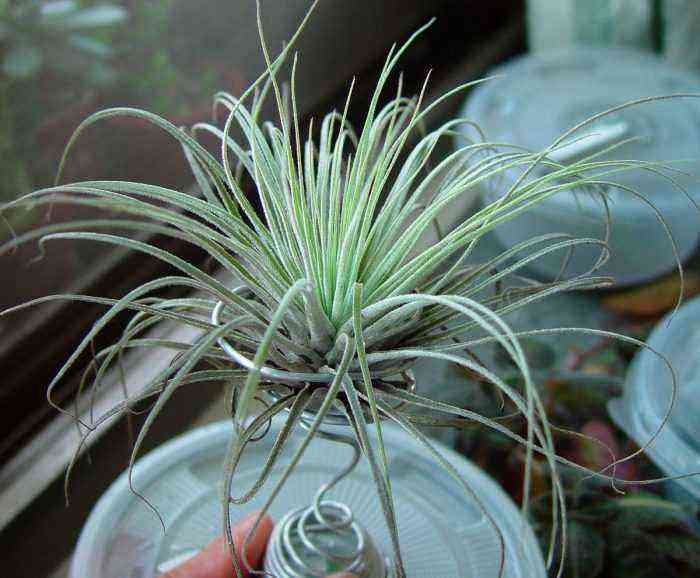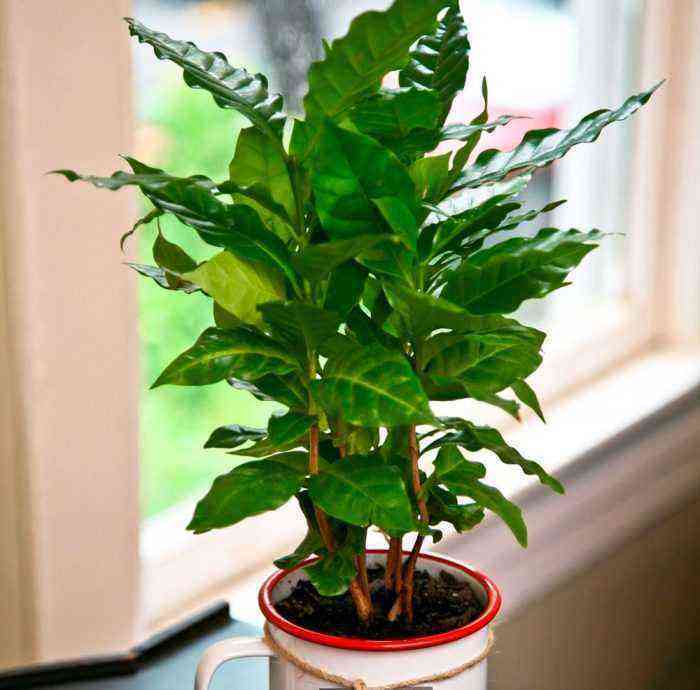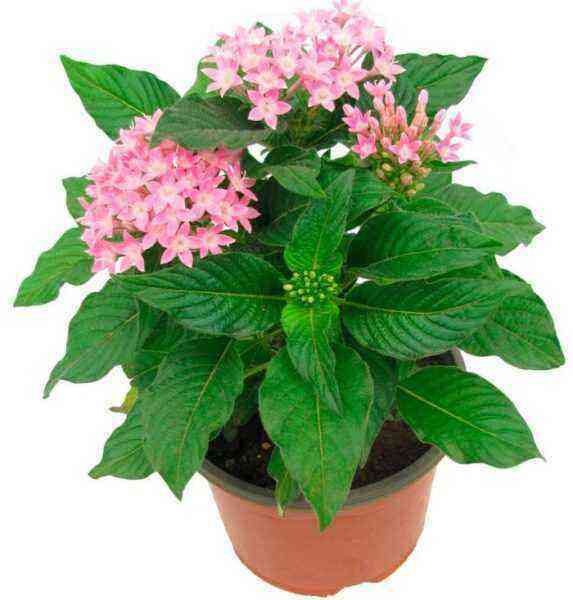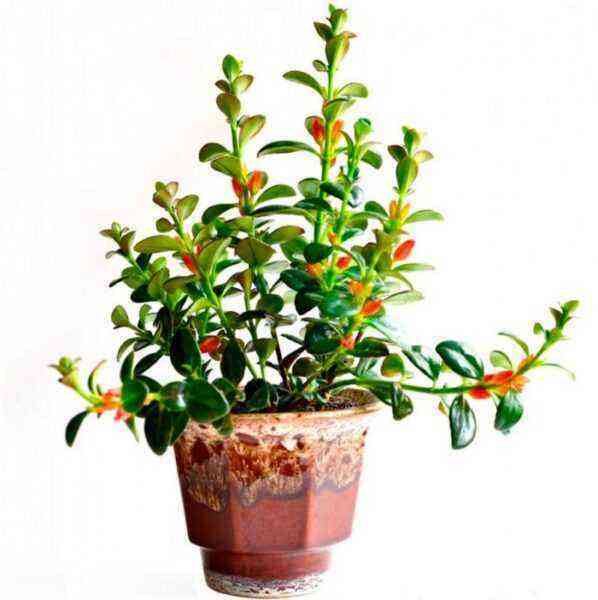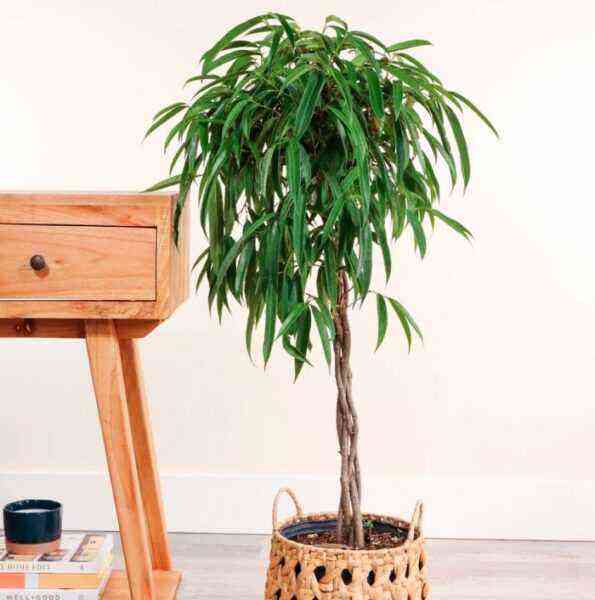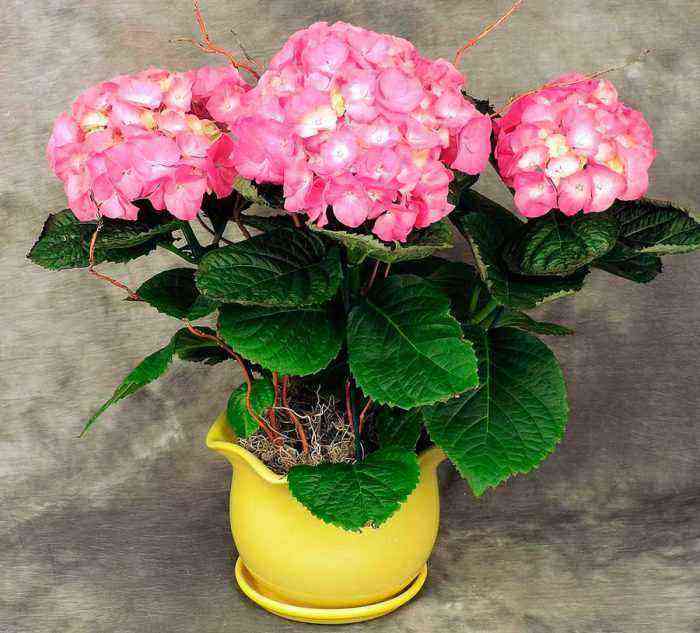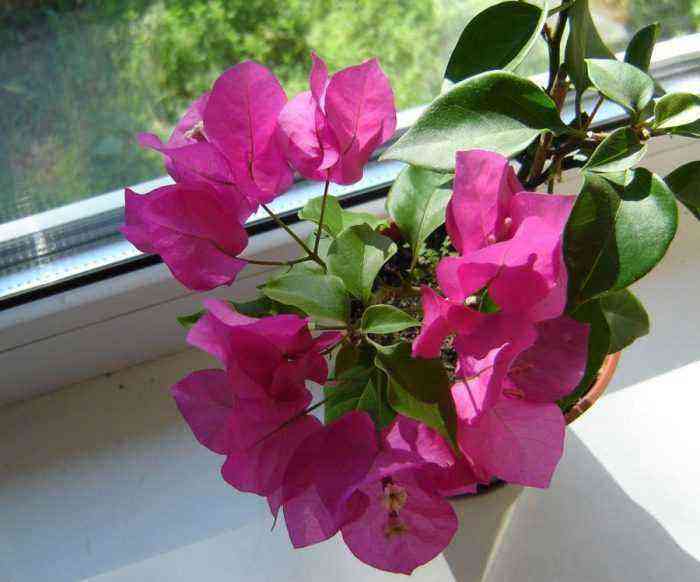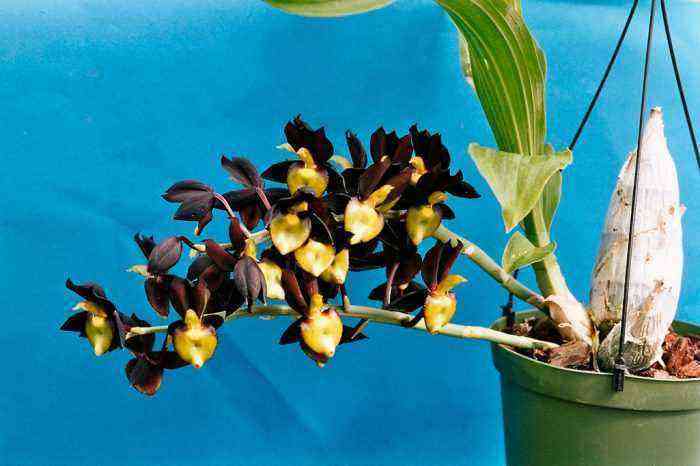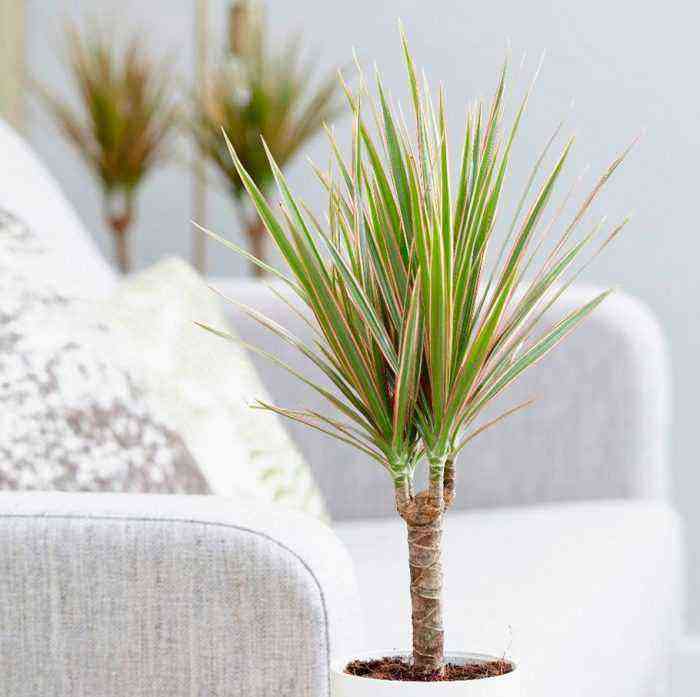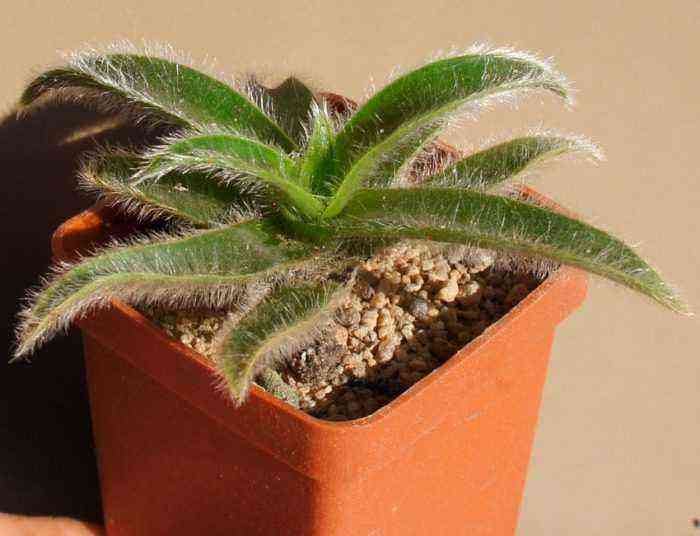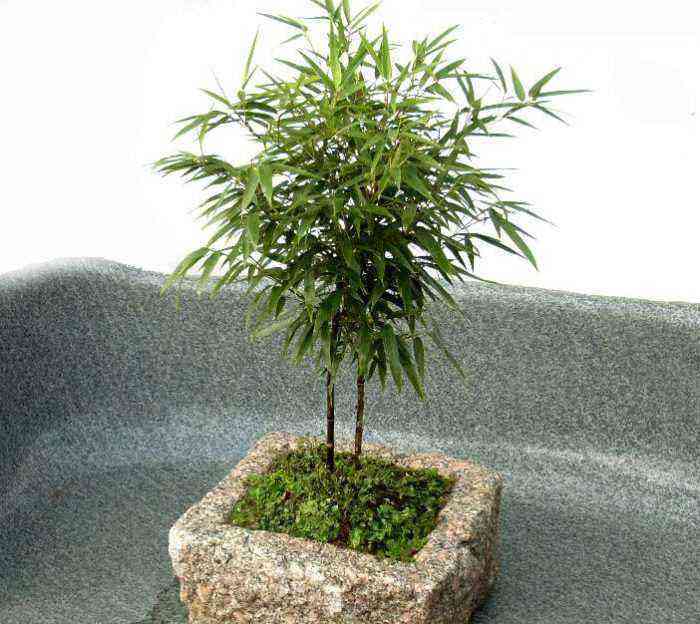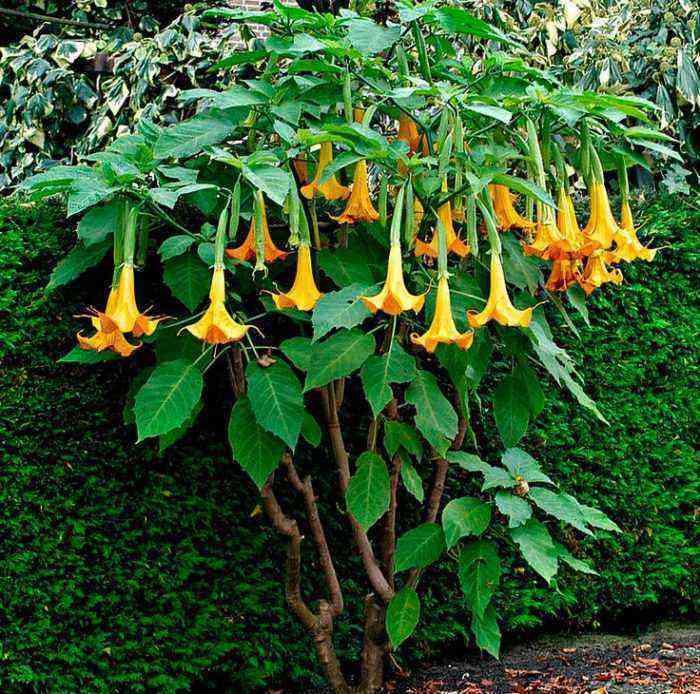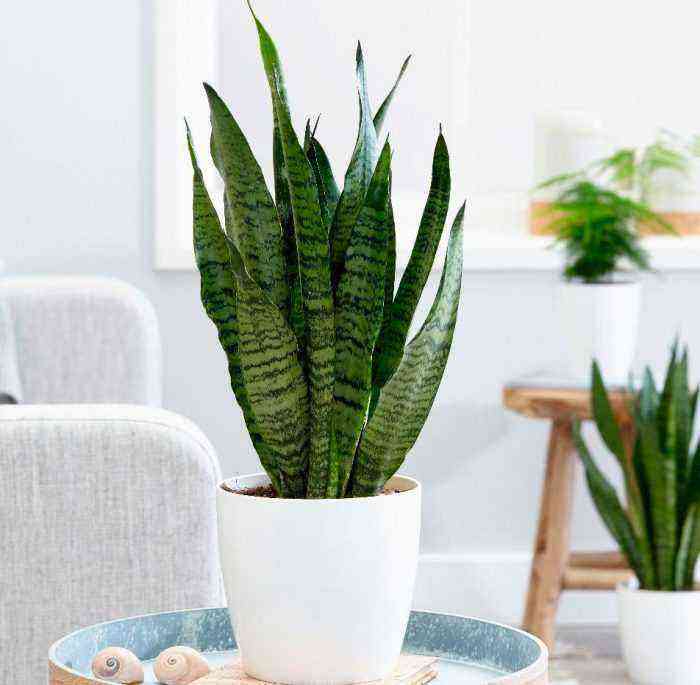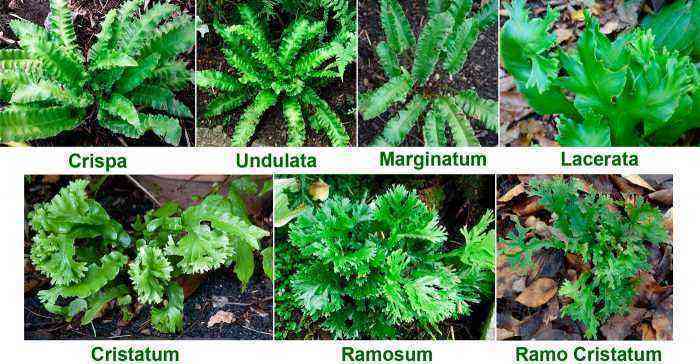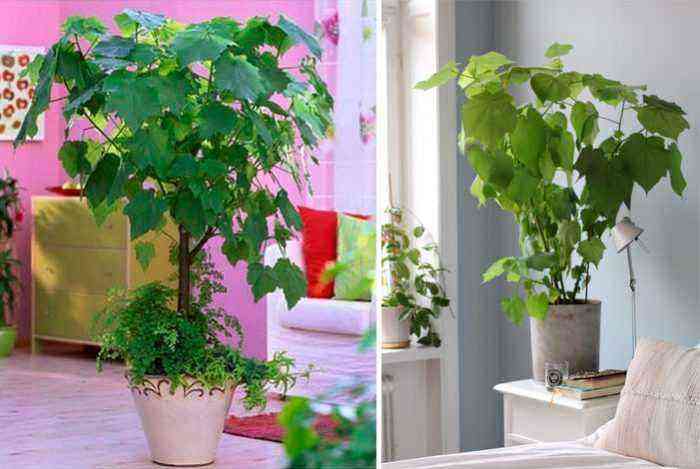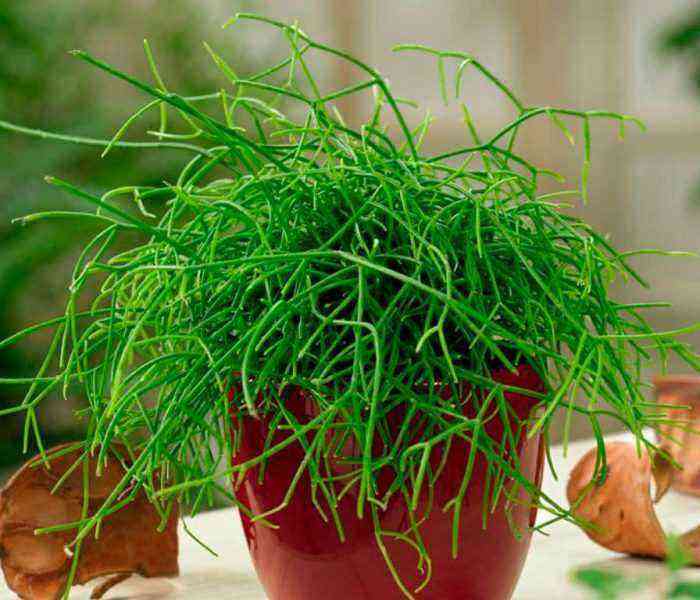Plant like butia (Butia) is directly related to the palm family (Arecaceae). In this genus, there are about 20 species of feathery palms. In natural conditions, they can be found in Brazil, Uruguay, South America, Paraguay, as well as in Argentina. These species have one similar feature, namely, their leaves have a feathery structure. However, these types can have very different heights. So, you can meet giants, which reach a height of 10 meters, and dwarfs forty centimeters high.
The most common type of palm tree among flower growers is Butia capitata. The homeland of this plant is South America. In nature, the height of its trunk can reach 6 meters, and its diameter is half a meter. This species is distinguished from the rest by a capitate thickening at its base, which served as the name of the plant – capitate butia.
This species has long-stemmed, arched, rather tough leaves, which can reach 2 to 4 meters in length. Moreover, each leaflet contains from 70 to 100 pairs of narrow xiphoid lobes, about 75 centimeters long. And these lobes are spaced from each other at a distance that exceeds their own width. The front part of the leaves is painted in a gray-green color, and the back part is in exactly the same color shade, but it is somewhat paler. The petioles of young leaves are covered with thick felt, and in adults – small thorns.
As they grow, the lower leaves die off and fall off, and in their place are short stumps from the petioles. Thus, an unusual appearance of the barrel is formed. After some time, the stumps also fall off, and where they were attached, traces similar to scars remain. So, gradually the lower part of the trunk is cleared.
The palm tree begins to bloom in late spring and early summer. A panicle of a spicate, loose inflorescence grows from the axil of the upper leaf. In length, this inflorescence can reach 1,4 meters, and it contains a large number of light red flowers. Ripening of oval-shaped fragrant fruits occurs in the last weeks of September, the first in October. These fruits are edible. They are eaten both raw and used for making liqueurs and jams. Due to the fact that a magnificent jelly is obtained from these fruits, such a plant is also called “jelly palm”.
Caring for a boutique palm tree at home
This plant is quite impressive in size, so it will require a lot of space. She should be placed in a spacious, well-lit room in which she will be free. In order for a palm tree to grow and develop normally, you need to know a few rules for caring for it.
Illumination
This plant is not demanding on light. So, it grows well in partial shade and in a sunny place. In a well-lit place, a rather dense crown is formed near the butie, resembling a large ball in its shape, while the leaves will have a bluish color. When grown in partial shade, the leaves will be longer and arched, and in this case they are colored green. If there is too little light, growth may slow down.
Temperature conditions
In summer, the plant thrives at moderate temperatures. However, if for this period it is not possible to take the boutique out onto the street, you need to arrange regular ventilation of the room so that the air does not stagnate.
The resting time of the palm tree is observed from the end of the autumn to the end of the winter period. For this period, it is recommended to rearrange the plant in a fairly cool place from 10 to 15 degrees.
How to water
During the warm season, watering should be regular and abundant, especially if the palm tree is in a sunny place. Make sure that no liquid stagnates in the pot. Overdrying the soil can also harm the plant, because the tips of the leaves that have dried up as a result do not recover over time.
In winter, when a dormant period is observed, it is necessary to water the butia much less often, only after the substrate dries out by 1/3 part.
Air humidity
Despite the fact that a palm tree needs moderate moisture, when grown indoors, the tips of the leaves may begin to dry out. In order to avoid this, it is necessary to regularly moisten the plant from a sprayer with lukewarm soft water. It is recommended to spray it in the morning and in the evening, when the direct rays of the sun will definitely not fall on the foliage.
Earth mixture
A suitable soil must be water and air permeable, slightly acidic (pH 5,0–6,0), and rich in nutrients. Purchased soil for palm trees is suitable for planting. An earthen mixture can be made independently by combining leaf and turf soil, as well as coarse sand in a ratio of 3: 3: 1. Do not forget to make a good drainage layer at the bottom, which will help to avoid stagnation of liquid in the substrate.
Fertilizer
Top dressing is carried out during the period of intensive growth once every 1 weeks. To do this, use a special fertilizer for palm trees or a complex fertilizer for decorative deciduous plants.
Transplant Features
The plant is rarely transplanted, if absolutely necessary, about once every 1 years, since the palm tree reacts negatively to this procedure. The transplant is carried out in the spring. The topsoil must be replaced once a year. The old soil layer should be removed to a depth of 4 centimeters.
Trimming
The plant should not be pruned.
Methods of reproduction
It can be propagated by seeds that have little germination. From the moment of sowing to the appearance of the first seedlings, it can take from 6 to 12 months.
Diseases and pests
Scales, spider mites or thrips can settle on the plant. If pests are found, it is necessary to carry out treatment with chemicals for the appropriate purpose.
This is a rather capricious plant and it can get sick as a result of improper care. So, butia reacts extremely negatively to low air humidity, to improper watering, to insufficient light and to the absence of a rest period with moving to a cool place. In this regard, before you start growing a palm tree, you need to think carefully about whether you can handle caring for it.
